|
|
Carnaval de Limoux
 05/08/20 05/08/20

 New programme for 2021
Videos are currently being updated & refreshed New programme for 2021
Videos are currently being updated & refreshed

The typical village fête in Europe is held in late summer when the nights are still warm, and the crops and grapes have been harvested.
However the annual fête in Limoux, is different in almost every respect. For a start it lasts not three days but nearly 3 months and it takes place in mid-winter not during summer.
It is the earliest and longest fête in the French calendar, starting in late December/ January and continues until two weeks before Easter Sunday.
It is often argued that it is the longest carnival in the world and over the years it has taken on other international dimensions such as the 'Carnaval du Monde'.
An event that takes place on the same weekend as 'Toutes les Bandes' (All the bands).
A Brief History
It is claimed that this fête has been held continuously since the middle ages. During revolutionary times an Arrêté of the
Municipal Council dated February 1793 attempted to suppress it, but without success. No-one knows how it all originated.
Some say it originally celebrated concessions made to the town by a nearby monastery during the Middle-Ages.
There are possible links to the local sparkling white wine called Blanquette de Limoux, an ancient wine that gave winegrowers in Champagne the idea for their product.
It is a subject of conjecture, whether it was given or stolen but it is a recorded fact that Blanquette de Limoux was first made by the Benedictine monks at the nearby Abbey in St Hillaire.
Others say that it was started by millers in the sixteenth century celebrating their successful trade with the kingdom of Aragon.
The earliest written record of the Limoux fête seems to be a regulation of 1604, but the truth is that it has probably
been evolving since well before medieval times, adopting new features over the centuries. At some stage it has been partially
merged with the Christian Lent carnival and with Pierrot traditions.
The introduction of women in 1972 was just the latest in a long history of evolutionary changes.
You will find modern musical instruments but also medieval Cornemuses, comical costumes and traditional Pierrots,
the latest fashions and Franciscan habits. Hats range from medieval headgear through eighteenth century tri-corns to top hats and baseball caps.
Whatever its true historical background no one cannot argue that it a truly unique experience and should not be missed.
Fécos
The Limoux fête is generally called a Carnival (Carnaval in French), but its real name is Fécos, the local name for its characteristic dances.
It starts with a parade of the organising committee dressed up in comic masks, white baggy shirts and trousers, wearing red scarves and clogs, and carrying whips.
These Meuniers (Millars) receive His Majesty, the King of the Carnival, a stuffed dummy, who will preside in a theoretical sort of way over the proceedings over the coming weeks.
Each year there is a new King and he comes in all different sizes and costumes, as well as personas.
(I have been told that the 'King' is actually the disguise for the devil and perhaps this change in name came about during the French Revoloution.)
Each weekend there will be more parades in the main square of the Place de la République. As they slowly move clock-wise around the square they stop at many of the cafés to refuel,
rest and entertain the customers.
Every Saturday and Sunday (and on Shrove Tuesday - Mardi Gras) a Bande will make a number of outings in and around the Place.
Each Bande consists of a group of masked Pierrots and their accompanying musicians who follow the Pierrots from one café to another on the Place, playing as they walk,
through a tunnel of spectators lining the ancient stone arcades of Limoux.
Pierrots wear a sort of uniform, the forerunner of our modern clown outfit. Each Bande has its own distinctive colours,
often based on the traditional Limoux version (Black with brilliant shiny bands). Pierrots wear a curious expressionless face mask.
They each carry a long, flexible, decorated wand called a Carabéna and a large sack of confetti.
Pierrots dance rhythmically in time to the music, delicately moving their long springy wands over their heads.
This rhythmic dance is the Fécos. In the old days flour and sweets were thrown around during the Fécos. Now confetti is used instead - more than seven tons of it each year.
If you take photographs you will almost certainly receive a handful over your head, delivered with grace and panache when you least expect it.
The language of the Fécos, like the word Fécos itself is Occitan. (This is the traditional language of the area, which in recent years as taken on a resurgence.
The Languedoc historically gets its name from, where they speak (Langue) the (d) Oc. In the last two years the Languedoc region has become part of Occitanie.)
Speeches are made and songs are sung in it. Nothing is sacred during the Fécos. Fun is poked at anything and anybody, from traditional local targets
to national politicians and other figures in the news. Jokes and accusations that would offend in French seem to be accepted with good grace in Occitan, however risqué or slanderous.
Some of the songs are traditional, some written specially for this year's festival. The musicians in each Bande play a range of instruments: trumpets, trombones,
clarinets, tubas and drums. The occasional Cornemuse - a medieval bagpipe made from an entire animal skin - also makes an appearance.
The Bandes play from a selection of over one-hundred tunes, all in the local style and not always easy for outsiders to tell apart.
Some of them owe a recognisable debt to operas and operettas from the end of the 19th Century and beginning of the 20th.
Following the Pierrots and the musicians come the Goudils. They too are masked, but their masks and costumes are
different from from those of the Pierrots as well as different from each other. Each has a distinctive character - an old man, a cartoon character, a harlequin, a fat woman,
a local dignitary, a clown, the President of the USA, even the British Royal Family. It is often difficult to determine the real sex of a Goudil.
There are few limits, either to their inventiveness or taste and sometimes they are mildly offensive but everything is done for fun. (If you are offended turn or close your eyes.)
There are over 20 Bandes - each of which performs on just one day - once in the morning, once in the afternoon and once in the evening.
Anyone can join a Bande as a Goudil - they are not members of the Bande. Sometimes members of other Bandes join other Bandes as Goudils.
Pierrots stop and speak to people. Their conversations or Chines also generally end in the distribution of confetti, scattered over heads,
rubbed gently into faces, pushed under hats or inserted into shirts. (Do not be surprised if you still find confetti in your clothes days if not weeks later.
It gets everywhere but the Place du Republic is spotless by the next morning. Perhaps there are magical creatures who appear after everyone has gone home? Who is to say!)
The Fécos is not just a spectacle, and those who witness it are not mere spectators. They are Badauds, participants in the Fécos
with their own special name and their own special role. When they feel the sensuous caresses of a Carabéna they become the centre of attention.
The Pierrot on the other end of the Carabéna will be expecting to exchange witty repartee. "Te counaissi" (I recognise you) says the Goudil disguising his voice,
after which he may say something funny, or perhaps not so funny. The Badaud responds with as much wit as possible. If he recognises the Goudil as well, he will have won the exchange.
The groups who do this are all local and sometimes represent medieval guilds. Children also take part from an early age and the rules that are applied so strictly to everyone
else are largely ignored for children. In fact it is often just an excuse to dress up and have fun. The youngsters even have their own two days of Carnival following the 'Toutes Les Bandes',
where they are escorted by their school teachers.
The first outing starts at 11 a.m., generally inspired by a topical event, ribald or grotesque wherever possible. The 4:30 p.m. outing is slower and the costumes more traditional.
The 10 p.m. outing is the most atmospheric with an even slower rhythm. It is lit by Entorches. These are burning torches made using ancient techniques.
They burn for a full 2 hours. By their light the Pierrots process, slowly moving their Carabénas and distributing confetti.
It all makes a colourful spectacle. Other events are held from time to time, for example the king might be brought down to judge a spoof beauty contest.
Look a little closer still, and you will find yet older, darker elements. Chines for example are not always innocent fun.
Anonymity allows things to be said that would otherwise remain unsaid. Those cagouls and masks, gloves and the disguised voices are important ways to help conceal a Pierrot's identity.
Many a Badaud has been caressed by a Carabéna, looked into a mask and heard a strange voice confide some dreadful or embarrassing truth about questionable business deals,
illegal activities or private family matters.
On the last night of the last day of Carnival, the Sunday before Palm Sunday, a trial is held of the King of the Carnival.
At midnight His Majesty, the straw mannequin, is tied to a stake and judge, prosecutor, defence council and an executioner make speeches - all in Occitan.
The King is defended vigorously but the prosecution wins the case and the King is condemned to death. Through the fun and games there is a stark reminder that this is the area where
the Cathars flourished, where the medieval Inquisition was created by Saint Dominic's Dominican friars, and where countless people were burned alive for the crime of
choosing their own form of religious belief. Even the joke executioner in his black hood can send a chill down the spine.
Immediately after the trial the King of the Carnival is burned on a pyre in the centre of the main square,
as the Pierrots throw their Carabénas and masques into the flames: They chant "Adiou paure canaval, tu t'en vas e iu demori jusqu'à l'annada que ven"
(Goodbye poor Carnival, you go, and I remain until next year). Participants fall to their knees bewailing His Majesty's passing and bowing to the ground
towards his burning remains, then stand up, join hands, and dance around the fire singing bawdy ditties about the coming Spring. They do this three times as the King burns,
then the Carnival is over for another year.
The annual Spring selection and sacrifice of a king is well known to anthropologists.
It is a popular theme found in many cultures around the world marking the passing of one year and the birth of the new. In Europe it often points to origins not in the Middle Ages but in prehistoric times.
So the reason that the origins of the festival at Limoux seems so hazy is not that early written records have been lost.
It is rather that the origins date back to a time before writing had been invented, a time when real people rather than straw effigies were sacrificed to help restore the sun,
usher in the Spring and ensure a good harvest.
After the Night of the Blanquette, which signifies the end of the Carnival, there is another big event hot on its heels in the Limoux area.
Toques et Cloches takes place on the Saturday before Easter but that is a story for another time.
Please add to this page by sending to us information and photos of your experiences of Carnival in an email.

|
|
|

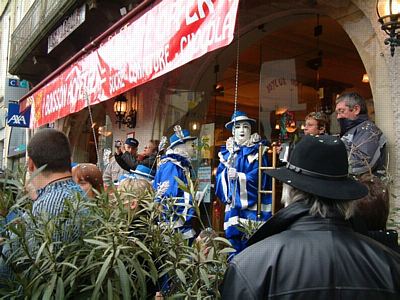


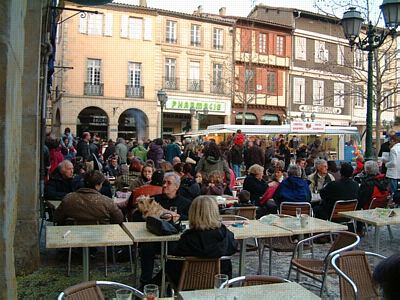



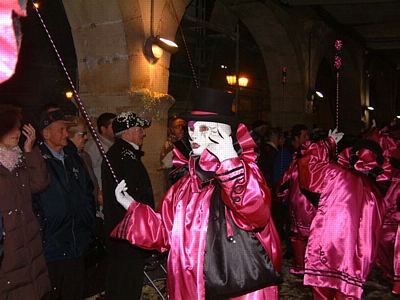


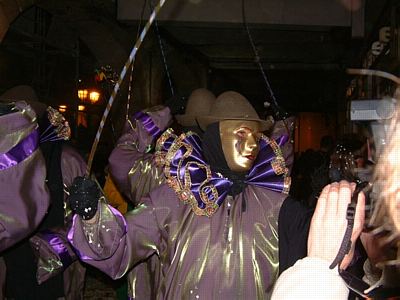
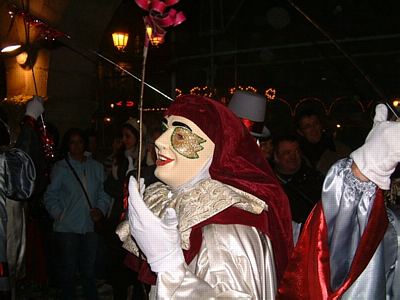

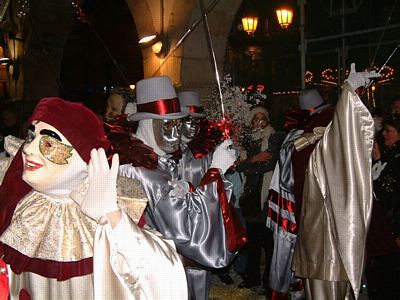
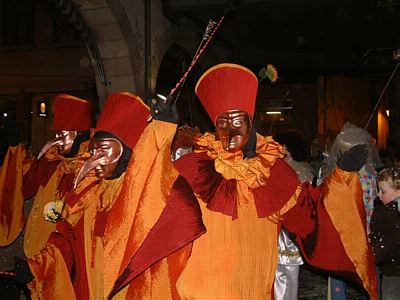
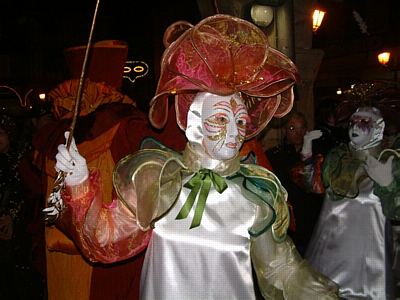
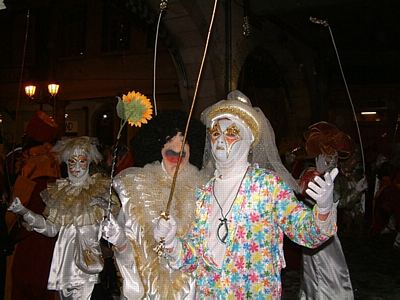
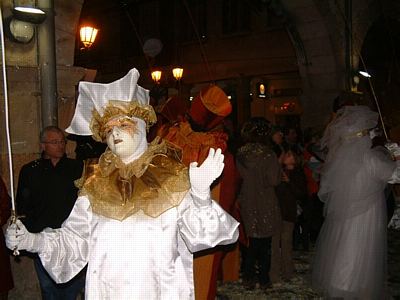







©Photographs property of www.maison-limoux.com if you wish to use them free of charge please contact me using Contacts Page

|
 ... promoting the best of the South of France for 20 years
... promoting the best of the South of France for 20 years

 ... promoting the best of the South of France for 20 years
... promoting the best of the South of France for 20 years
